This is the first full-feature contribution from one of our avid readers, Rodelio “Del” Hernandez of Lipa City. He shared with us the written accounts and photos of his visit to Calatagan’s gallant lighthouse of Cape Santiago..
If you want your work to be published on our site, click HERE.
REVISITING EL FARO DE CABO SANTIAGO
“Even with time and the elements acting against them, the beauty that the Spanish engineers erected on our soil cannot be erased. It is time that we, the inheritors of this patrimony should do what we can to ensure its survival for the next 100 years. For these lights not only lit the souls and imagination of those who chanced upon them; they also guided a nation to progress.” (Manuel Maximo Noche Lopez Del Castillo: “The Spanish Colonial Lighthouses in the Philippines”)
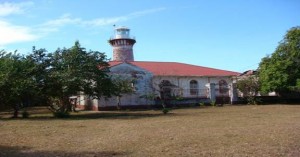
Constructed in December 15, 1890 by Spanish engineers, the Calatagan Lighthouse is reportedly one of the oldest working lighthouses in the country, providing guidance of approach to Manila Bay, lighting up the Verde Island passage, the San Bernardino Strait onto the southern route across the islands (Faro de Punta de Malabrigo in Lobo – 1896, is the other lighthouse in the province of Batangas).
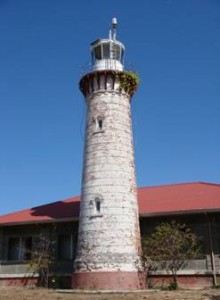
With its Spanish title of Faro de Cabo Santiago (Lighthouse of Cape Santiago), the lighthouse is also called Punta de Santiago (Santiago Point) or Cape Santiago, named after Don Santiago Zobel who, accordingly donated the approximately one-hectare property where the structure is located.
We embarked on a journey to said lighthouse, coming from the eastern part of Batangas (from Manila, it’s via SLEX onward through the STAR-Calabarzon Road), passing through the Cuenca-Alitagtag-Taal-Balayan route. From Balayan, there’s a westward road passing through barangays Sambat, Canda and Duhatan, a 15-minute stretch leading to the Balibago intersection of the Lian-Calatagan road (a right-turn would lead to Matabungkay beach about two kms. away). We turned left, noticing many signages of prominent resorts as we went on until we came to the sprawling Hacienda Bigaa (Zobel family) area, eastside of the national road, before reaching the town of Calatagan.
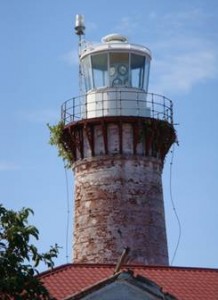
We turned right through an unpaved path, then left, carefully tracing the course to avoid the aroma bushes (with their protective 1-inch sharp thorns) and after a few turns, we reached an inclined approach where a padlocked makeshift gate to the lighthouse blocked the entry to the premises. From the Balayan take-off point, it took us approximately less than an hour to reach Cape Santiago.
We were met by the lighthouse keeper with whom we coordinated earlier. His name is Antonio C. Coz, Jr. or Jun, a third generation lighthouse keeper whose devotion to his job had apparently helped stave off further deterioration of the century-old facility.
Jun narrated to us how the lighthouse was attacked by the Americans during the 2nd World War, because a Japanese garrison was situated nearby. He showed us the battle scars on the steel gate’s grills (which are as thick as a man’s thumb) due to the impact of 50-caliber bullets fired by strafing American warplanes. His grandfather was the first lighthouse keeper, followed by his father who was almost killed by the Japanese on account of his uncle’s joining the band of guerillas during the war.
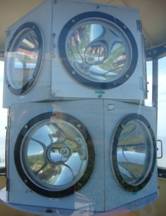
We carefully negotiated the old and narrow, spiral steel staircase of the tower consisting of 65 steps from the base to the opening at the top of the lighthouse, which was no mean feat for those with hip or limb afflictions. The top of the lighthouse was made of a glass-panelled enclosure protecting the equipment which housed the lamp and original lenses (later research after this travel revealed that technology of lighthouse lenses was improved with the introduction of Fresnel [pronounced FREH nel] lenses in 1822, ranked according to the order of their magnitude, from the first to the sixth order (the first order being the largest, most powerful and expensive, having the longest focal length).
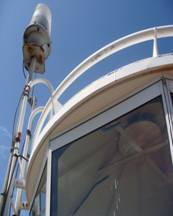
From atop the parola, we had a magnificent vista of the surroundings, with the wide expanse of Calatagan Bay at the west, the conjoining hills and beach fronts extending from north to south of the parola, while ongoing real estate development marked the eastern part of the historic landmark. At that point, we were approximately perched some 92 feet above sea level, since the hilly elevation of the Cape Santiago Lighthouse was 41 ft. while the structure itself stood 51 ft. from the ground.
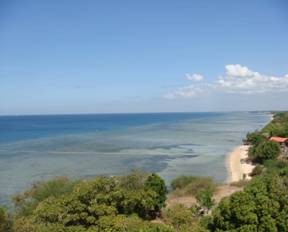
There was a time (1990-1995) when the main building accommodated transient guests but said endeavor was short-lived on account of the scarcity of funds to maintain it. It is due to the same financial constraint that the two (2) service buildings are presently in a sad state of disrepair, not to mention the fact that there is no official approach to the site because the area surrounding the lighthouse premises is privately-owned property.
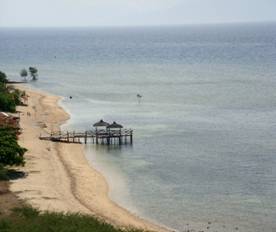
Hopes are high that such move would materialize as it is deemed most providential to this historically significant icon of light which had served as a necessary beacon to seafarers for the last 117 years. At present, El Faro de Cabo Santiago is continuously extending its service to sea-worthy streamers plying the local routes to and from Manila as well as to international port of calls with the help of the other “Cape Santiagos” providing unsolicited guidance for maritime travelers. (April 2008)
This article was published in Beacon Post Magazine which I co-edited (catering to cooperatives) in June 2008. It also appeared on the maiden issue of the nationwide electric co-ops newspaper, Current News (July 2009) where I was Associate Editor. — Del Hernandez
[tags]calatagan lighthouse, lighthouse of cape santiago calatagan, calatagan, batangas, cape santiago lighthouse, punta de santiago, faro de cabo santiago batangas, history of calatagan lighthouse, calatagan lighthouse location, how to go to cape santiago lighthouse in calatagan[/tags] WOWBatangas.com Your Source of Great News and Stories from the Province of Batangas, Philippines
WOWBatangas.com Your Source of Great News and Stories from the Province of Batangas, Philippines




Modesty aside I was the one who is leading the program to restore the lighthouse through the PCGA and the Heritage Group of the town but I have to shelve the idea because the LGu through the mayor expressed her intention that it should be the LGU alone who should do the project as if they know what to do and understand something about heritage conservation.2 years have passed since the last time I saw the mayor, nothing happened because I possessed all the documents and research work about it because we are the ones who thought about the concept not the LGU.But as courtesy we approached and invited them to be partners.When they saw the idea is great, the mayor started gearing towards her personal interest in Trapo-style politcal approach.They dont understand about partipatory governance.We will push thorugh soon but we will have to be clever to avoid politicking,credit-grabbing and crab mentality of some insecure local politicians who only think for their own benefit and local political career
i wish to ask how to get to cape santiago on a do it yourself way of travelling.. i only use public transportations..
can someone please educate and send me directions..
thank you very much…